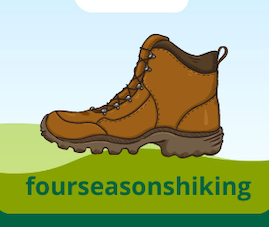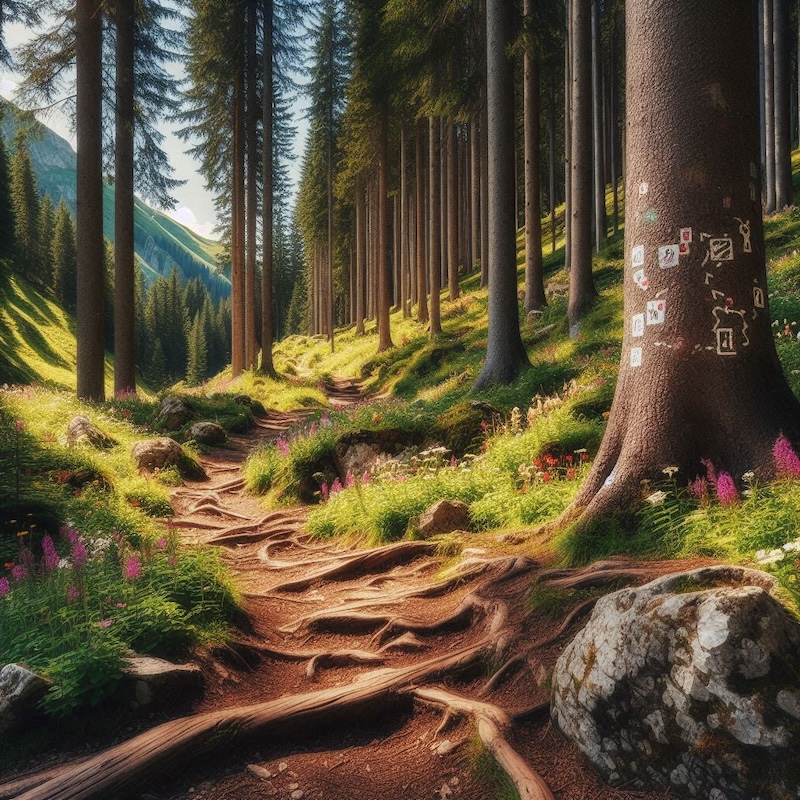I’ll tell you, there’s more to hiking than just lacing up your boots and hitting the trail. Knowing how to read trail markings is essential for your safety and for navigating the pathways correctly. These small symbols are the language of the trail, guiding you silently. Without them, you could enter without a clear direction.
Trail markings come in various forms, the most common being blazes: typically painted marks on trees or posts. Blazes can also be plastic or metal signs attached to trees. Rocks piled up on one another, known as cairns, or stacked in a way that points a direction, called ducks, serve as three-dimensional guides. In temporarily marked trails, you might come across flagging: brightly colored tape tied to branches.
Now, let’s talk color codes. They’re not just for show. Each color indicates the trail’s difficulty level. For example, blue often represents a moderate path, while red can signal a more challenging route. Not every trail system follows the same color scheme, so checking local guidelines before you set out is critical. In many places, a double blaze can mean a forthcoming turn, a new trail, or an important landmark.
How do you make sense of these directional cues? Single blazes indicate you should continue straight. A set of blazes placed vertically means a turn – the higher blaze points in the turn’s direction. Where trails intersect, you might see multiple blazes to help you choose the correct path. A lack of Blakes could be signaling that you’ve come to the end of a trail, or it’s time to look around for the next marker, sometimes we can lost in natural detours.
Lastly, keep your eyes peeled for markers in all sorts of weather. Rain, snow, and fallen leaves can hide trail markings. If you’re hiking in snow, look for signs attached higher up on trees. And always remember, if the weather turns bad or visibility is low, there’s no shame in turning back. Better safe than losing your way.
Making Sense of Trail Signage: Your Guide to Staying on Track
I’ve walked you through the necessity of understanding trail markings, and now I turn your attention to trail signs. These are equally important to ensure you enjoy a safe and enlightening outdoor experience. While markings are your breadcrumb trail, signs are your encyclopedia, offering rich information at a glance.
Trail signs go beyond just keeping you on the right path; they are instrumental in protecting the delicate balance of the ecosystems you’re traversing. By guiding your steps, they help minimize human impact on the surrounding environment.
You’ll come across various symbols and pictograms that speak a universal language of outdoor navigation. Whether it’s a hiker silhouette pointing the way or a crossed-out campfire indicating a no-burn zone, these signs are designed to be understood quickly, no matter where you’re from.
At the trailhead, take a moment to study the map and any pertinent information about the trail. It will often provide the trail’s length, difficulty, and any key features or landmarks you may encounter along the way.
As you venture further, wayfinding signs can be crucial for keeping track of both your current location and your ultimate destination. They can inform you about the distance to the next landmark or back to the trailhead, helping you manage your time and energy resources wisely.
Finally, don’t gloss over the educational signs. They might reveal the history of the area or details about the local flora and fauna. This knowledge not only enriches your experience but also fosters a greater respect for the natural world and the need to preserve it for future hikers.
To sum it up, your ability to read trail signs plays a pivotal role in both your enjoyment and the conservation of natural spaces. Remember this the next time you lace up your boots and head out: Take a moment to appreciate the guidance that these signs provide. Trust them, follow them, and you’ll find that they enhance your outdoor adventure just as much as they ensure your safety.


What an interesting article. I really didn’t know how many different things we can look at when we are in nature. We’ve already done a lot of damage with our impact on the environment, so it’s really good that when we’re in nature, we don’t leave behind as little a trace as possible. I would also point out the noise. By making noise, e.g. with vehicles and listening to loud music, we frighten animals that are not human beings.
Well said, Thank you!
Lonnie
This post is a fantastic reminder of how essential trail markings and signs are for a successful and safe hiking experience. I’ve had my fair share of adventures where understanding these symbols was a game-changer. On one hike in the Appalachian Mountains, I almost missed a crucial turn, but thanks to a well-placed double blaze, I was able to stay on track and avoid getting lost.
Trail markings like cairns and blazes really do become your silent guides out there. I remember a time in the Rockies when the weather quickly turned, and snow started covering the trail. The only thing that kept me from wandering off course were the higher-up markings on trees that were still visible. It’s so true that being aware of these details can make or break your hike.
Has anyone else experienced a time when trail signs or markings made all the difference in your outdoor adventure? It’s always great to hear how these small details can have such a big impact!
Thank you for the experience, much appreciated.
Lonnie